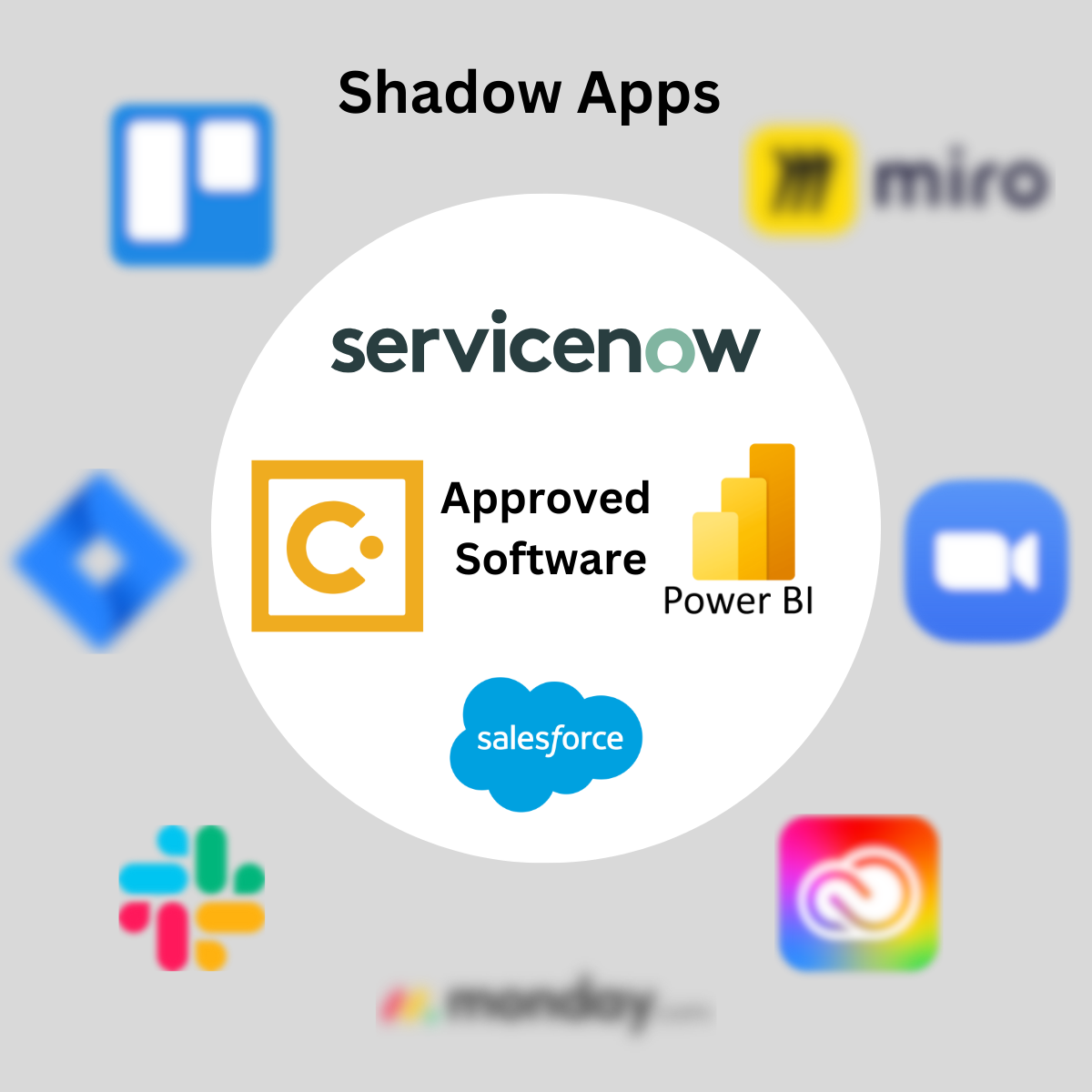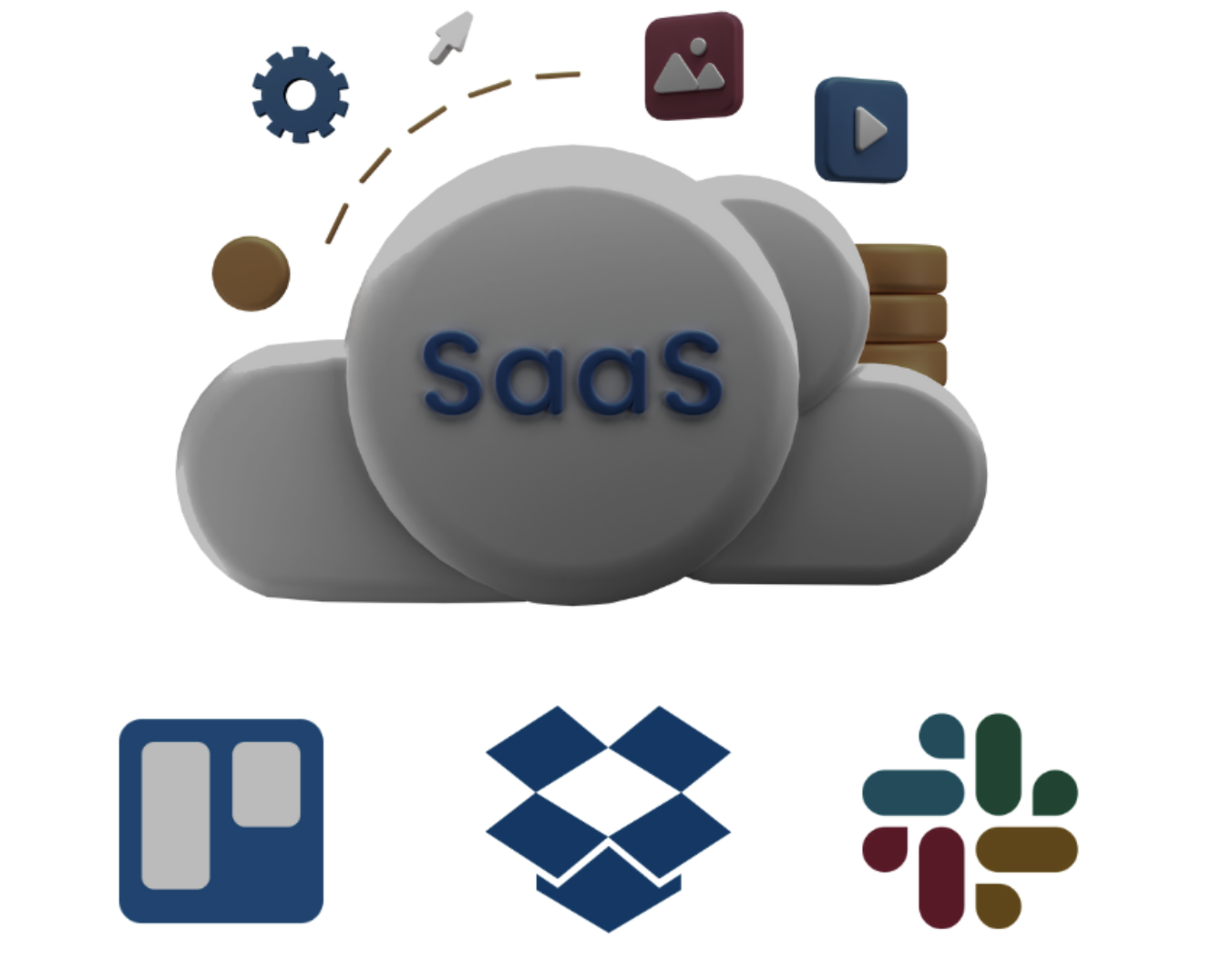What is Shadow SaaS and Why Should Business Executives Be Concerned?

Table of Contents
Introduction
Shadow SaaS refers to the use of Software as a Service (SaaS) applications within an organization without the knowledge, approval, or control of the IT department. These applications are often purchased and used by individual employees or departments to meet their specific needs, bypassing standard procurement and security protocols. While Shadow SaaS can be well-intentioned—intended to increase productivity or fill gaps in the official toolset—it poses significant risks to the organization.
Why Should Business Executives Be Worried?
-
Security Risks: When SaaS applications are used without IT oversight, they may not meet the organization’s security standards. This lack of control can lead to vulnerabilities, including the potential for data breaches, unauthorized access, and compliance violations. If sensitive company data is stored or processed by these unapproved tools, it could be exposed to cyber threats.
-
Compliance Issues: Many industries have strict regulatory requirements regarding data handling, storage, and privacy. Shadow SaaS makes it difficult to ensure compliance, as IT teams may not even be aware that certain applications are in use, let alone whether they comply with relevant regulations. This can result in hefty fines and legal repercussions if a breach occurs.
-
Cost Overruns: Shadow SaaS can lead to significant financial waste. Without centralized oversight, different departments may end up paying for similar or redundant tools, leading to unnecessary expenses. This lack of visibility also makes it challenging to negotiate better deals or eliminate unused licenses, ultimately impacting the company’s bottom line.
-
Data Silos: When different departments use different SaaS tools without integration, it creates data silos where critical business information is scattered across multiple platforms. This fragmentation hinders collaboration, reduces efficiency, and makes it difficult to get a unified view of the organization’s operations.
Real-Life Example of Shadow SaaS
A well-known example of Shadow SaaS occurred at a global financial services company. The company’s marketing department began using a popular project management tool to streamline their campaigns. This tool was not part of the company’s officially sanctioned software stack and was never vetted by IT.
Over time, the marketing team began storing sensitive customer information, campaign data, and financial forecasts on this platform. Because IT had no visibility into this tool, it wasn’t subject to the company’s strict security policies or data encryption standards.
Eventually, the project management tool was breached by cybercriminals, who gained access to the sensitive data stored within it. This breach not only compromised customer information but also led to a significant financial loss for the company. Additionally, the company faced regulatory scrutiny and fines for failing to protect customer data adequately.
This incident served as a wake-up call for the company, leading them to enforce stricter controls and visibility over all SaaS applications used within the organization. It highlighted the importance of monitoring and managing all software tools, including those that might not be on the official radar.
Shadow SaaS examples

-
Trello: If a marketing team starts using Trello for project management without the knowledge or approval of the IT department, it could be classified as Shadow SaaS. While Trello is a useful tool, without proper oversight, it could lead to data silos and security risks if sensitive information is stored there.
-
Dropbox: An employee using Dropbox to store and share company files without IT’s approval can pose a significant risk. If the data stored isn’t encrypted or managed according to company policies, it could lead to data breaches or compliance issues, especially if the files contain sensitive or regulated information.
-
Slack: Sales team might start using Slack for quick communication and file sharing without IT’s knowledge. While Slack is excellent for team collaboration, if it’s not integrated with the company’s official IT systems, it can lead to security vulnerabilities. Sensitive client data or internal communications could be exposed if the platform isn’t properly monitored and secured. Moreover, without IT oversight, critical data shared on Slack might not be backed up according to company policies, leading to potential data loss and compliance issues.
These tools, while effective for individual or team use, can become problematic if they’re not managed within the organization’s official IT framework.
The Growing Risks of AI Applications

As AI-driven tools become more prevalent, they bring new dimensions to the risks associated with Shadow SaaS. These applications can process vast amounts of data, offering powerful insights and automation, but they also require careful management to prevent data breaches and compliance issues.
Note-Taking AI Tools
Imagine a scenario where an executive starts using a note-taking AI tool that listens to all meetings to generate automated minutes and summaries. While this sounds like a great productivity booster, these meetings often contain sensitive discussions about internal strategies. If this tool is not properly secured and vetted by the IT department, it could inadvertently store these sensitive conversations in unsecured locations, or worse, the data could be accessed by unauthorized parties.
Document Summarization AI Tools
Consider another scenario where an employee uses an AI tool to summarize documents and grants it access to their Google Drive or Microsoft OneDrive. This tool now has unrestricted access to all business data stored on the user’s cloud drive. Without appropriate oversight, the tool could inadvertently expose sensitive files, leading to data breaches. For example, confidential financial statements, HR records, or strategic plans could be accessed and potentially misused, putting the entire organization at risk.
Data Exfiltration and DLP Challenges
One of the most critical concerns with Shadow SaaS and unauthorized AI tools is their potential to bypass Data Loss Prevention (DLP) systems. DLP solutions are designed to monitor and protect sensitive data from unauthorized access and exfiltration. However, Shadow SaaS applications often operate outside the purview of these systems, creating loopholes that can be exploited.
For instance, if a Shadow SaaS tool with access to sensitive data is compromised, it might exfiltrate this data without triggering any DLP alerts. This is because the DLP system is typically configured to monitor only approved applications and channels. Imagine an AI-driven document summarizer gaining access to sensitive legal documents and exporting summaries to an external server, all without any alerts being raised. This kind of data breach could have catastrophic consequences, both financially and reputationally.
Conclusion: Why Executives Need to Act Now
The risks associated with Shadow SaaS and AI applications are real and growing. From security vulnerabilities to data exfiltration risks that bypass DLP systems, the potential for significant damage is high. Business executives must recognize the dangers lurking in the shadows of their IT environment and take proactive steps to mitigate these risks.
To protect your organization, it’s crucial to implement strict oversight of all SaaS tools and AI applications. Ensure that all software is properly vetted, monitored, and integrated into the company’s overall IT and security strategy. By doing so, you can prevent unauthorized access to sensitive data, avoid compliance issues, and reduce the risk of costly data breaches. Don’t wait for a breach to happen—take action now to bring all your applications out of the shadows and into the light.

 Never miss a story from us, subscribe to our newsletter
Never miss a story from us, subscribe to our newsletter